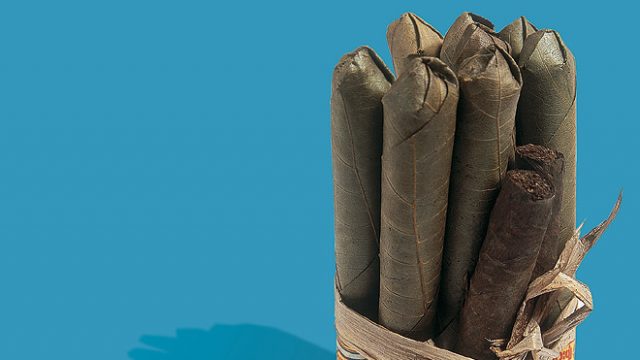One of the joys of travelling in Myanmar is that you get to smoke many of their lovely green cheroots without being made to feel guilty, or making unseemly dents in your wallet. All public places are thick with smoke curling up from such unlikely sources as little old ladies and children. Everybody, and I mean everybody, smokes cheroots in Myanmar. Cheroots are made of dried thanat leaves, rolled around various proportions of crushed tobacco and dried wood. One end is open for lighting, the other rolled shut around a filter of dry corn husks. Women sit cross-legged in thatch roofed, open-walled shelters, gossiping as their fingers fly, making cheroots out of a mess of leaves and crumbly tobacco. They cut the leaf to size, roll in the tobacco and filter, and bind it with thread or brand labels all in a few seconds. The late Burmese writer Daw Khin Myo Chit describes the ritualistic cheroot-making of her grandmother’s day: women rolled their own cheroots with thanat leaves, soft dried wood seasoned with tamarind pulp, crushed tobacco, and a skein of silk or cotton thread from the family loom. Today, it’s a labour-intensive, low yield, cottage industry. One woman makes 1000 cheroots a day, for which she will earn 200 kyat (US$ 0.70 or Rs 46.42). Two cheroots sell on the market for under 5 kyat (under two US cents, or Rs1.33). Cheroots come in all shapes and sizes, from rolls only slightly bigger than a cigarette, to elegant long white cheroots favoured by the old aristocracy. They have various potencies and colours.
When in Myanmar, smoke a cheroot
No trip to Myanmar is complete without a taste of this all-important part of life, cheroot, even if you--re a non-smoker.

When in Myanmar, smoke a cheroot
When in Myanmar, smoke a cheroot



